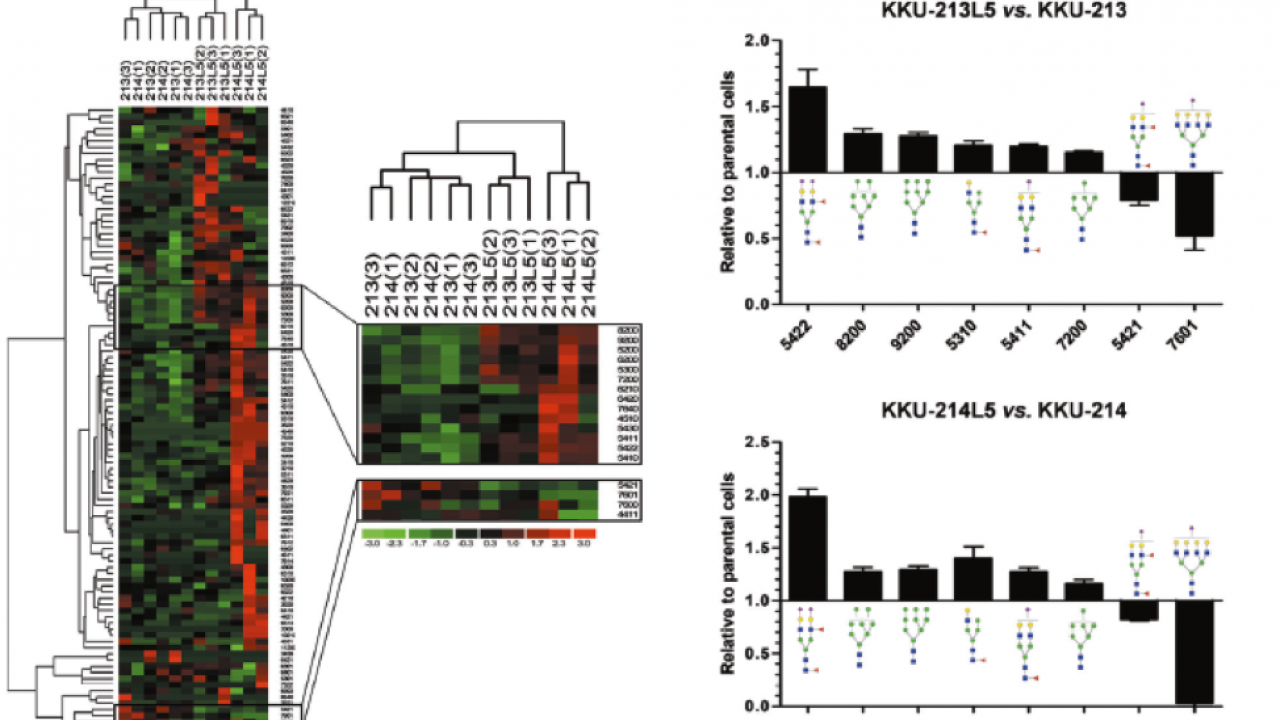
Protein targets for cancer metastasis
Cholangocarcinoma is a highly prevalent form of cancer in Southeast Asia and primarily Thailand. It is caused by eating a river fish infected with a liver fluke that may eventually cause a form of liver cancer. A recent publication in the journal Oncogene (Nature Press) by collaborators in the Khon Kaen School of Medicine in Thailand and UC Davis Chemistry showed that metastasis is mediated by O-GlcNAcylation, a post-translational modification of proteins, through the proteins FOXO3 and MAN1A1. Through glycomic analysis the authors found that the cell membrane of metastasized cells increases in high mannose glycosylation. The research provides new targets for cancer therapeutics.
For more information, the original article is located here: https://doi.org/10.1038/s41388-018-0366-1
